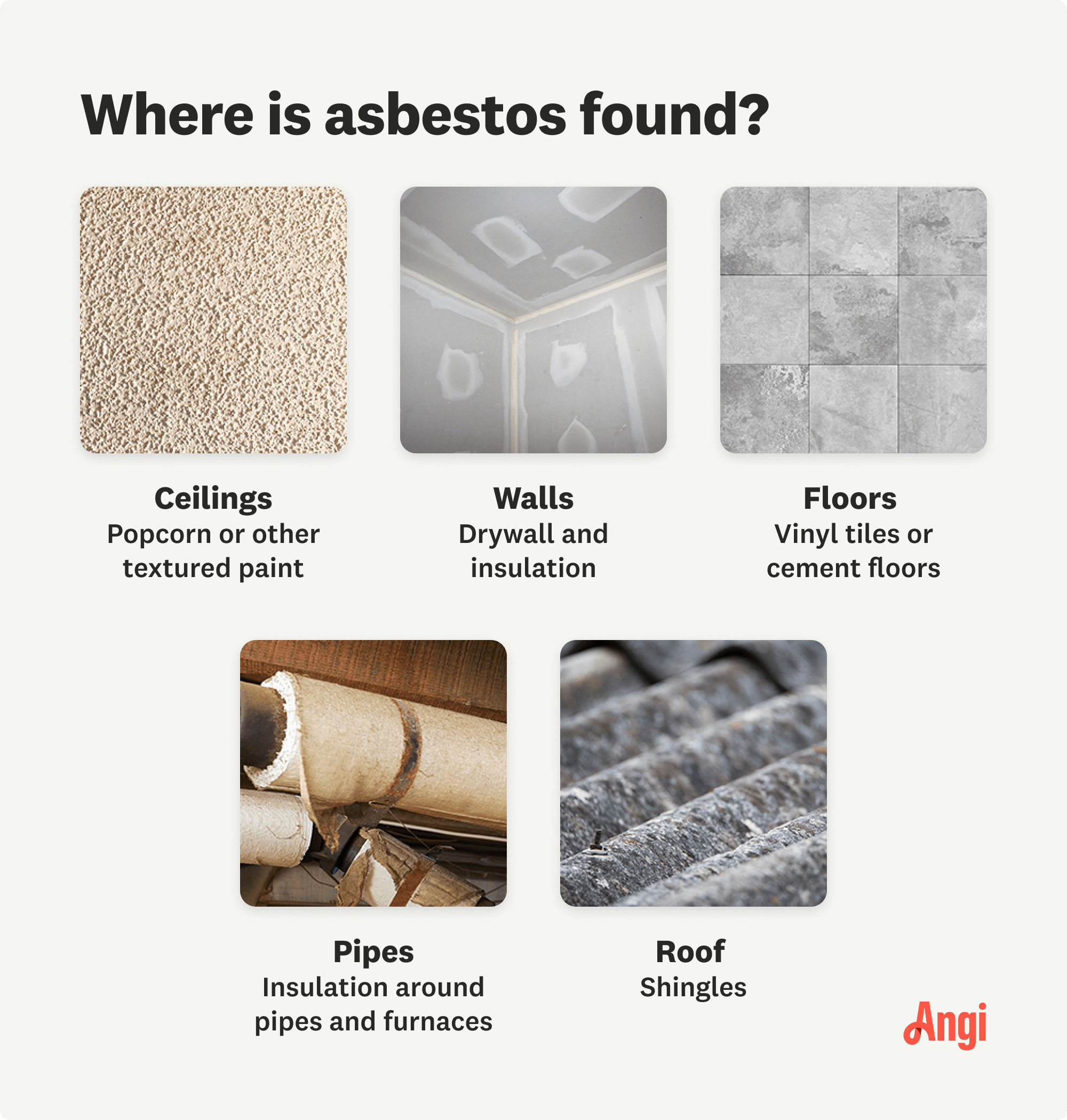The Dangers of Asbestos Exposure
When asbestos is hiding in your home, don’t disturb it without professional help


Highlights
Asbestos was once a common building material due to its fire-resistant properties.
Today, we know that asbestos exposure can lead to many negative health side effects.
Seeking professional intervention to remove asbestos in your home can help keep you safe.
Once celebrated for its fire-resistant properties and durability, asbestos is now known for being very dangerous for those living in a home where it resides. Understanding the gravity of asbestos exposure is paramount. Keep reading for more insight into the dangers of asbestos exposure.
What is Asbestos?
Asbestos refers to a group of naturally occurring minerals composed of fine, durable fibers. Due to its heat resistance and strength, asbestos found its way into various industries, especially construction, where it was used in insulation, roofing materials, tiles, and even automotive components.
Health Risks of Asbestos Exposure
The danger lies in the microscopic airborne fibers released when asbestos-containing materials degrade or are disturbed. Inhalation or ingestion of these fibers can lead to severe health complications, often with latency periods spanning several decades. Here’s a closer look at how asbestos exposure can affect your health.
Respiratory Disorders
The inhalation of asbestos fibers wreaks havoc on respiratory health, leading to a spectrum of debilitating conditions. Among these is asbestosis, a chronic and progressive lung disease characterized by the scarring of lung tissue. This scarring, known as pulmonary fibrosis, stiffens the lungs, impeding their ability to expand and contract. As a result, individuals afflicted by asbestosis struggle with persistent coughing, shortness of breath, and progressive respiratory distress. This condition, often irreversible, compromises one's quality of life, with advanced stages necessitating oxygen therapy or lung transplantation for survival.
Mesothelioma
A particularly insidious consequence of asbestos exposure is the heightened risk of developing mesothelioma. This aggressive and often fatal form of cancer targets the thin membranes lining the chest, abdomen, or heart cavities. Unfortunately, mesothelioma diagnosis frequently occurs in advanced stages, primarily due to its lengthy latency period—sometimes spanning several decades. By the time symptoms manifest, the disease has often progressed significantly, making effective treatment challenging. Its aggressive nature and the limited success of available treatments underscore the critical importance of prevention and early detection in combating this silent and lethal threat.
Lung Cancer
The relationship between asbestos exposure and the development of lung cancer is well-established. Asbestos fibers, when inhaled, embed deep within lung tissue, initiating cellular damage and inflammation, which can culminate in the formation of cancerous cells. Moreover, individuals who smoke and are exposed to asbestos face a dramatically amplified risk of developing lung cancer. This combination acts as a potent catalyst, accelerating the progression of malignancy within the lungs. The likelihood of lung cancer significantly escalates in this scenario, highlighting the imperative need for smoking cessation and stringent measures to curtail asbestos exposure.
Other Health Complications
Beyond the more widely recognized conditions, asbestos exposure can manifest in a diverse array of health complications. Pleural plaques, characterized by the thickening of the lung's protective lining, serve as an early indicator of asbestos exposure. While typically benign, these plaques signify a heightened risk of developing more severe asbestos-related conditions.
Pleural effusion, marked by the accumulation of fluid around the lungs, compromises respiratory function and contributes to breathing difficulties. Furthermore, asbestos exposure has been linked to gastrointestinal cancers, underscoring the systemic impact of this hazardous substance on various bodily systems. These health complications highlight the need for comprehensive monitoring and proactive measures to address the consequences of asbestos exposure on overall health.

Why Professional Intervention Matters

Professional intervention in matters concerning asbestos exposure is critical due to the intricate nature of asbestos-related risks. Trained and certified professionals possess the expertise to accurately identify asbestos-containing materials, assess the level of exposure risk, and implement safe handling and removal procedures. Their knowledge ensures compliance with stringent safety regulations and standards, minimizing the potential harm caused by mishandling or improper removal.
Moreover, professionals equipped with specialized tools and protective gear execute meticulous containment and disposal methods, mitigating the release of hazardous asbestos fibers into the environment. Engaging skilled professionals prioritizes safety and provides assurance and legal compliance, safeguarding individuals and the broader community from the severe health consequences associated with asbestos exposure.
Who should you call for asbestos removal? It’s always a good idea to hire an asbestos abatement specialist near you to help with asbestos removal.
Frequently Asked Questions
Early signs of asbestos exposure might not immediately manifest. Over time, symptoms may include persistent coughing, chest pain, shortness of breath, and fatigue. However, these symptoms can mirror other respiratory conditions, making diagnosis challenging. Seeking medical evaluation is crucial for early detection and intervention.
Even a single encounter with asbestos fibers can pose health risks. While the severity depends on the duration and intensity of exposure, any contact can potentially lead to asbestos-related diseases. However, the likelihood of developing severe health issues increases with repeated or prolonged exposure.
If you suspect exposure to asbestos, prioritize seeking medical advice by informing your healthcare provider about the potential exposure with clear details about the circumstances that led to the exposure. Regular health check-ups and screenings if you work in high-risk industries or live in a home with asbestos are essential for early detection of any asbestos-related conditions. You should also consider consulting occupational health experts or legal professionals for guidance on potential next steps and preventive measures.
